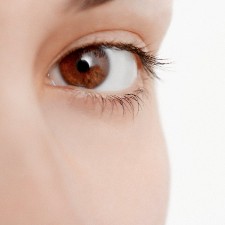Jun 4 2015
Some 30,000 years ago, prehistoric man wielded animal bones as needles to suture otherwise lethal wounds. This tactic has been used, and improved upon, over time and remains the basis of surgical procedures conducted today.

Even with radical new surgical techniques, which rely on metallic and polymeric staples or chemical adhesives to seal incisions, infection and permanent scarring remain major concerns. The success of any wound closure is entirely dependent on the physician's skill set alone.
Prof. Abraham Katzir, Head of the Applied Physics Group at Tel Aviv University's School of Physics and Astronomy, has spent much of his career honing a technique he devised called "laser welding," by which incision edges are heated in a precisely controlled manner for optimal wound closure. Now a study recently published in the Journal of Biomedical Optics explores a radical new application of this technique — sealing corneal transplants.
A corneal transplant can restore vision in people suffering from corneal conditions, such as bulging corneas, Fuchs' dystrophy, thinning corneas, corneal scarring caused by infection or injury, cataracts, corneal swelling, corneal ulcers, or complications caused by previous eye surgery. "Every year, for 50,000 Americans on the verge of losing their sight, corneal transplants are the only option. It is a torturous procedure followed by many months of painful recovery caused by sutures left in the eye," said Prof. Katzir. "Using our special optical fiber, we were able to seamlessly bond corneal tissue without causing damage to the surrounding eye or leaving lingering stitches."
An innovative fiber
"A surgeon needs great skill to perform internal stitching, to bond tiny blood vessels or to mend cuts on the skin almost without a trace," said Prof. Katzir. "Therefore, there has been great interest in the medical community in levelling the playing field, devising new technology that all surgeons — even those without years upon years of suturing experience — can use."
Prof. Katzir's group at TAU developed unique optical fibers made of silver halides that are transparent in the infrared. Such fibers deliver an infrared laser beam, which carefully heat the approximated edges of an incision spot by spot. Simultaneously, the same fiber delivers infrared light from the heated spot to an infrared detector, which monitors the temperature at each spot, much like an ear thermometer. This makes it possible to heat each spot to a desirable temperature (e.g. 140-150 degrees F), which creates a strong bond without causing thermal damage.
"The most important aspect of our technique is temperature," said Prof. Katzir. "Take an egg, for example. If you cook it at 70-80 degrees F, nothing happens. However, if you fry it at 250 degrees F, you destroy it altogether. At an intermediate temperature, however, one gets a hard-boiled egg. The same goes for laser bonding, where heating at an intermediate temperature, under precise controls, ensures strong bonding without scarring."
Prof. Katzir and his team, in collaboration with surgeons from Tel Aviv Medical Center and Sheba Medical Center, conducted corneal transplant experiments in eyes taken from deceased cows and pigs. They used the fiber-optic laser system to achieve a permanent tight seal with minimal thermal damage to the surrounding eye tissue. Conducting biopsies on the eyes, the researchers found neither leaks nor signs of overheating.
A broad range of applications
Based on these results, Prof. Katzir has received approval to conduct corneal transplant experiments on live animal models. In parallel, he is applying his technique to endoscopic surgeries.
"This least invasive surgery is the way the medical world is moving," said Prof. Katzir. "One of the most difficult tasks facing surgeons is the closure of incisions in such surgeries. Our technique is based on thin and flexible optical fibers that can be inserted through the endoscope to facilitate laser bonding within the body. This new technique is poised to be a major player in such surgeries and in the fast growing field of robotic surgery in particular."
In clinical trials conducted recently by members of Prof. Katzir's group and by general surgeons on incisions in the skins of 10 human patients, wounds treated with the fiber-optic laser technique successfully healed, with almost no scar tissue. "There are endless applications for the fiber-optic laser system," said Prof. Katzir. "Plastic surgery, urology, ENT, brain surgery, emergency medicine, battlefield wounds — the possibilities are truly endless. I hope that we will be able to apply our innovative technology to some of these fields."